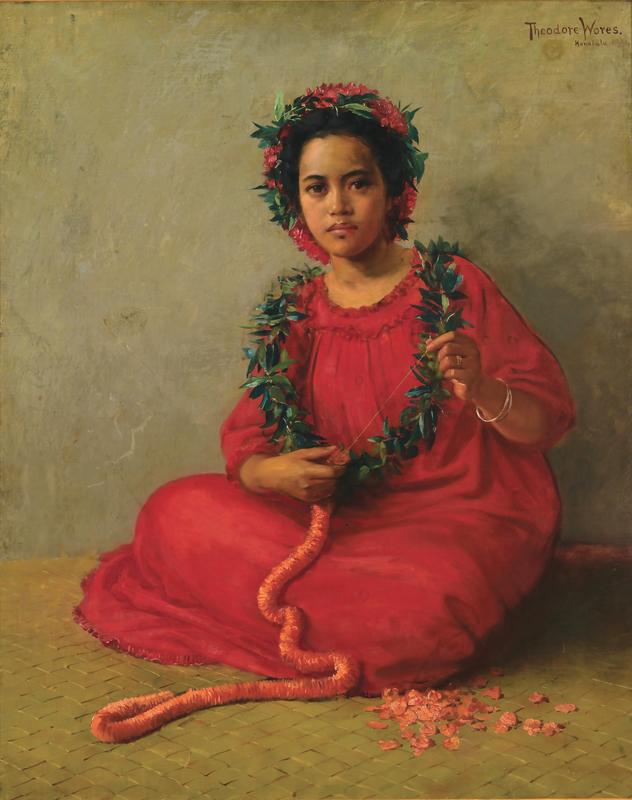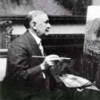More about The Lei Maker

Sr. Contributor
The Lei Maker is Theodore Wores’ most famous painting, and his work is in the White House and the Smithsonian, so that’s saying something!
It is also said to be the most famous Hawaiian portrait of all time. San Francisco artist Wores painted this in 1901 on the first of two extended visits to Hawaii during his vast world travels. The turn of the 20th century was a tragic and transformative time for Hawaii. 1901 was just three years after Hawaii became a US territory, when a bunch of rich white dudes decided to lock up Hawaii’s universally beloved Queen Lili’uokalani and claim Hawaii as their own. It was in limbo for a while as an “Independent Republic” (aka under illegal occupation by aforementioned white dudes), until officially becoming a territory in 1898. At this time, the wounds of annexation were painfully fresh; Lili’uokalani was alive and well, but her former palace was commandeered by the invading government, and her people were fighting for basic civil rights in their own country.
There is nothing overtly political about Wores’ portrait of a Polynesian girl, and his soft romanticism of the subject reflects the more benign image of “Old Hawaii” that is still propagated by tourist brochures today. Indeed, the popular concept of a lei as a token to overseas visitors on arrival and departure emerged out of commercial tourism. Within Hawaii, the lei comes from an ancient Polynesian tradition, and can have deep emotional, cultural and spiritual significance.
Laka, Pele’s forest-dwelling hippie sister, is the patron goddess of lei making and Hula. Not surprisingly, leis are an integral part of hula, symbolic of the story and characters in the dance/chant. Laka’s signature flower is the Lehua blossom. Pele had the hots for the handsome youth Ohi’a, but Ohi’a’s true love was the maiden Lehua, and he rebuffed Pele’s advances. Pele was not one to take rejection well, so she turned Ohi’a into a gnarled tree. The other gods took pity on the grieving Lehua by turning her into a beautiful red blossom on that tree so the lovers would always be together. If you pick Lehua and separate her from Ohi’a, the lovers weep and it rains. Ironically, Lehua is a popular lei flower, so the young lovers get a lot of “me” time.
You can still find lei makers on the streets of Honolulu, and little has changed since this painting. To get the real stuff (not one of those puny strings of purple Mai-Tai-garnish orchids), go to the Chinatown marketplace, or the stalls under the bridge at the airport.











